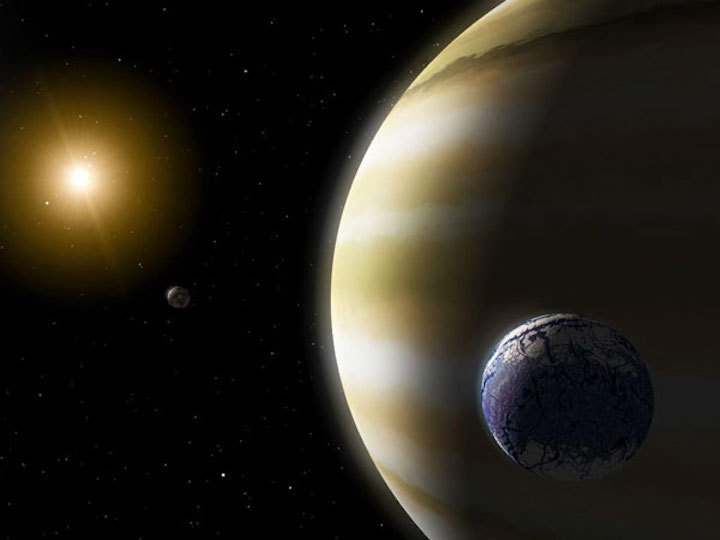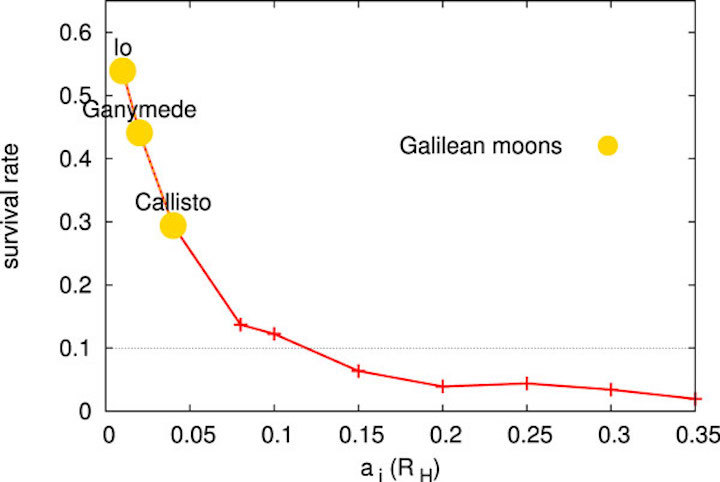13.03.2018
Planet interactions are thought to be common as solar systems are first forming and settling down. A new study suggests that these close encounters could have a significant impact on the moons of giant exoplanets — and they may generate a large population of free-floating exomoons.

Chaos in the System
In the planet–planet scattering model of solar-system formation, planets are thought to initially form in closely packed systems. Over time, planets in a system perturb each other, eventually entering an instability phase during which their orbits cross and the planets experience close encounters.
During this “scattering” process, any exomoons that are orbiting giant planets can be knocked into unstable orbits directly by close encounters with perturbing planets. Exomoons can also be disturbed if their host planets’ properties or orbits change as a consequence of scattering.
Led by Yu-Cian Hong (Cornell University), a team of scientists has now explored the fate of exomoons in planet–planet scattering situations using a suite of N-body numerical simulations.
Chances for Survival
Hong and collaborators find that the vast majority — roughly 80 to 90% — of exomoons around giant planets are destabilized during scattering and don’t survive in their original place in the solar system. Fates of these destabilized exomoons include:
- moon collision with the star or a planet,
- moon capture by the perturbing planet,
- moon ejection from the solar system,
- ejection of the entire planet–moon system from the solar system, and
- moon perturbation onto a new heliocentric orbit as a “planet”.
Unsurprisingly, exomoons that have close-in orbits and those that orbit larger planets are the most likely to survive close encounters; as an example, exomoons on orbits similar to Jupiter’s Galilean satellites (i.e., orbiting at a distance of less than 4% of their host planet’s Hill radius) have a ~20–40% chance of survival.

Four examples of close-encounter outcomes: a) the moon stays in orbit around its host, b) the moon is captured into orbit around its perturber, c) and d) the moon is ejected from the system from two different starting configurations.
Adapted from Hong et al. 2018
-
Free-Floating Moons
An intriguing consequence of Hong and collaborators’ results is the prediction of a population of free-floating exomoons that were ejected from solar systems during planet–planet scattering and now wander through the universe alone. According to the authors’ models, there may be as many of these free-floating exomoons as there are stars in the universe!
Future surveys that search for objects using gravitational microlensing — like that planned with the Wide-Field Infrared Survey Telescope (WFIRST) —

Moon initial semimajor axis vs. moon survival rate. Three of Jupiter’s Galilean moons are shown for reference.
Hong et al. 2018
-
Quelle: Sky&Telescope
